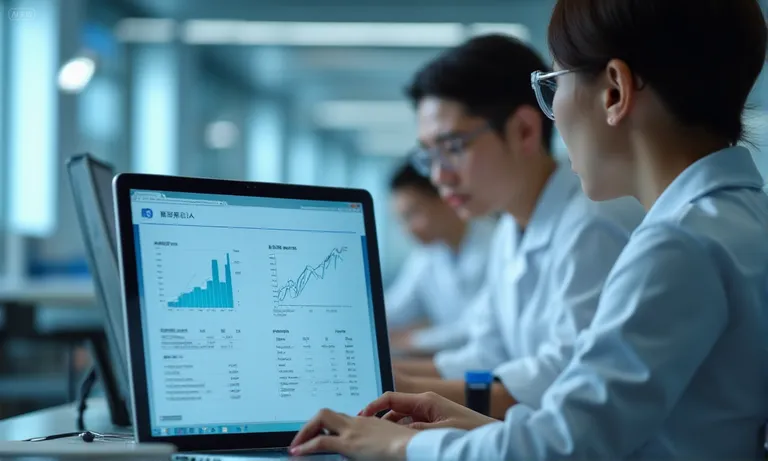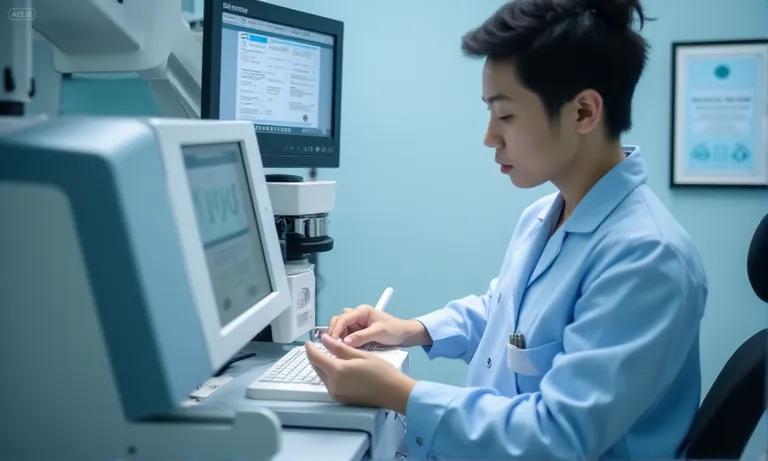Evaluating a dental lab for long-term partnership and capacity growth requires a structured approach that goes beyond price. Decision-makers must assess financial stability, technical expertise, workflow compatibility, and the lab’s ability to scale production without compromising quality. Together, these elements determine whether the lab can deliver consistent results, support sustainable collaboration, and meet future growth needs.
Procurement teams and dental organizations often face recurring challenges when selecting a partner:
- Financial transparency: predictable costs and evidence of reinvestment in technology and staff.
- Technical reliability: compliance with ISO and FDA standards while keeping remake rates low.
- Workflow integration: digital compatibility and responsive communication channels.
- Capacity readiness: proven scalability, efficient turnaround times, and outsourcing flexibility.
- Risk control: strong QA policies, legal compliance, and client diversification to reduce dependency risks.
By aligning evaluation around these dimensions, procurement leaders can identify dental labs capable of sustaining both current requirements and future expansion. A well-structured evaluation reduces operational risk and ensures the chosen partner becomes a reliable extension of clinical and business workflows, supporting growth with consistency and trust.
How to Assess the Financial Stability of a Dental Lab
Evaluating the financial strength of a dental lab helps practices avoid disruptions caused by sudden cash flow shortages or poor reinvestment discipline. Labs with healthy revenue growth, transparent pricing, and consistent reinvestment in technology are far more likely to deliver stable support and scale with client needs.

dental-lab-financial-stability-assessment
Which financial statements and metrics indicate long-term security
Reviewing a lab’s financial profile goes beyond top-line revenue. Reliable partners often provide indicators such as:
- Revenue growth trends over multiple years, showing resilience and market demand.
- Profitability ratios, which highlight whether the lab’s pricing covers operational costs without cutting corners.
- Cash flow statements, ensuring the lab can manage payroll, raw material sourcing, and logistics without delays.
A history of stable financial performance signals that the lab can handle long-term commitments without service interruptions.
How pricing transparency and predictable billing support sustainable cooperation
Unclear or shifting billing practices often create friction. A lab that offers itemized invoices, fixed fee structures, or bundled pricing models helps procurement teams forecast budgets more accurately. Predictable billing also reduces disputes, strengthening trust. In one REAL™ example, a mid-sized European practice switched labs after facing hidden shipping surcharges; its new partner provided transparent billing, which cut administrative back-and-forth by 20% and restored financial predictability.
Why reinvestment in technology and staff training signals future scalability
Financial stability is not only about surviving today but also preparing for tomorrow. Labs that reinvest in CAD/CAM systems, 3D printing, and staff development are better equipped to expand capacity and adapt to evolving clinical demands. For instance, one overseas dental lab reinvested 15% of annual profits into digital infrastructure, which later allowed it to scale production for a DSO client without compromising turnaround time.
Assessing financial stability provides a clear view of whether a lab is capable of being a long-term, scalable partner. Practices that review financial metrics, pricing discipline, and reinvestment strategies reduce the risk of disruption and gain confidence in sustainable collaboration.
What Technical Expertise and Quality Standards Should Be Verified?
Verifying a lab’s technical expertise and compliance standards is critical for ensuring patient safety, case accuracy, and long-term reliability. Labs that combine certified processes, specialized technicians, and advanced digital technologies are better positioned to deliver consistent results and scale with evolving clinical needs.

dental-lab-technical-expertise-quality-standards
How ISO 13485, FDA, and ADA compliance ensure safety and reliability
Industry certifications confirm that a lab follows established quality management systems. A quick comparison illustrates the role of compliance:
| Certification | Relevance for Practices | Why It Matters |
|---|---|---|
| ISO 13485 | Global medical device quality standard | Ensures traceability and consistent manufacturing processes |
| FDA Registration | Required for labs exporting to the U.S. | Confirms safety and regulatory acceptance |
| ADA Recognition | Endorsed by the American Dental Association | Builds confidence for U.S.-based clinicians |
Labs that openly share certification status and renewal history demonstrate accountability and commitment to quality.
Why technician training and specialization matter for complex cases
Even with the best equipment, outcomes depend on skilled technicians. Complex cases such as full-arch implants or mixed-material restorations require expertise in both design and material science. A lab with technicians trained in advanced CAD/CAM design modules or specialized in implant frameworks reduces the risk of remakes. In one REAL™ case, a DSO in Canada cut its implant remake rate by 18% after partnering with an overseas lab that dedicated a team of technicians to full-arch cases.
How digital technologies (CAD/CAM, 3D printing, scanner compatibility) impact precision and workflow
Modern digital tools increase efficiency and precision. Key elements include:
- CAD/CAM systems that deliver consistent margins and fit.
- 3D printing for accurate models and faster prototyping.
- Scanner compatibility with major platforms, ensuring seamless file exchange.
When labs invest in these technologies, clinicians benefit from predictable workflows, shorter turnaround times, and fewer adjustments chairside.
Confirming a lab’s technical expertise and quality standards ensures both compliance with regulations and reliable case outcomes. It also signals whether the lab is prepared to handle increasingly complex cases as practices expand.
How to Evaluate Communication and Client Support Practices?
Strong communication and responsive support are often the deciding factors in long-term lab partnerships. Clear contact channels, structured feedback, and reliable delivery records give practices confidence that their cases will be managed consistently. Evaluating these elements upfront reduces surprises and strengthens collaboration.

dental-lab-communication-client-support
Which communication channels (email, portal, account manager) ensure timely updates
Reliable labs provide multiple ways to reach them:
- Dedicated account managers for personalized oversight and escalation.
- Digital portals for scan uploads, case approvals, and real-time updates.
- Email or secure messaging for documentation and quick clarifications.
This flexibility allows practices to choose the most efficient channel depending on urgency and case complexity.
How client feedback loops and review mechanisms drive continuous improvement
Feedback mechanisms show whether a lab treats communication as one-way or collaborative. Structured review sessions, surveys, or post-case debriefs allow clinicians to highlight recurring issues. In one REAL™ example, a U.K. practice reduced remake rates by 12% after its partner lab established monthly feedback calls, turning client comments into updated submission guidelines. Such loops demonstrate maturity and willingness to adapt.
Why on-time delivery rates reflect both reliability and customer satisfaction
Delivery performance is one of the most concrete indicators of client support. Consider the following comparison:
| Metric | Strong Lab Partner | Weak Lab Partner |
|---|---|---|
| On-time delivery rate | 95%+ consistently | Below 80% |
| Average turnaround time | 5–7 business days | 10+ days with variability |
| Delay communication | Proactive alerts with revised ETA | No notice until client follows up |
Tracking these indicators shows whether a lab can reliably meet deadlines and communicate delays transparently.
Evaluating communication and support practices reveals more than responsiveness—it highlights how well a lab can align with clinical workflows and adapt to long-term client expectations.
What Factors Demonstrate a Lab’s Capacity for Growth and Scalability?
Scalability is a critical factor when evaluating a dental lab for long-term partnership. A lab that can handle larger case volumes, maintain consistent turnaround, and flex capacity during peak demand is far more likely to support the growth strategies of practices and DSOs.

dental-lab-capacity-growth-scalability
How to measure current production capacity and utilization rates
Production capacity is one of the clearest indicators of scalability. Practices can request data on:
| Metric | Why It Matters | What to Look For |
|---|---|---|
| Daily/weekly unit output | Shows current production capability | Consistent ability to process volume without backlog |
| Utilization rate | Indicates how much capacity is actively used | 70–85% utilization suggests room for growth without overstretch |
| Peak load handling | Reflects lab’s resilience under demand spikes | Documented ability to scale output during seasonal peaks |
Reviewing these figures ensures that labs can expand without compromising quality or delivery.
Why turnaround time benchmarks and low remake rates indicate scalability
Scalability is not just about producing more but about producing consistently. Key indicators include:
- Turnaround time stability even as volumes increase.
- Remake rates below 5%, showing quality control keeps pace with higher production.
- Consistency across case types, from simple crowns to complex implant frameworks.
Labs that can maintain these benchmarks demonstrate they are structured for growth rather than short-term throughput.
How outsourcing flexibility supports peak demand and regional expansion
Labs that collaborate with subcontractors or maintain regional outsourcing networks can support expansion into new geographies or seasonal demand spikes. For example, one overseas dental lab partnered with a regional subcontractor network in Southeast Asia to handle overflow cases, allowing a U.S. DSO to double its monthly order volume during Q4 without delays. Such flexibility shows not only capacity but also operational maturity.
Evaluating these factors helps practices identify labs that are not only reliable today but also equipped to scale with growing clinical demand and regional expansion strategies.
Why Risk Management and Compliance Safeguards Are Critical
Risk management is a cornerstone of sustainable partnerships with dental labs. A lab that proactively controls quality, complies with legal frameworks, and manages client concentration risks will provide stability and long-term reliability. Without these safeguards, practices face higher remake costs, compliance liabilities, and potential disruptions in supply.

dental-lab-risk-management-compliance
How QA policies and remake procedures reduce long-term risk
Effective labs establish structured quality assurance (QA) programs, including:
- Standardized remake procedures with documented timelines and cost allocation.
- Multi-step inspections during production, not just final checks.
- Root cause analysis for every remake, ensuring mistakes are not repeated.
For example, a U.S. clinic lowered remake costs by 15% after its partner lab implemented a QA workflow requiring photographic documentation at each milling stage. Such systems reduce hidden costs and strengthen clinician confidence.
Which legal and regulatory frameworks (ISO, HIPAA, liability insurance) must be confirmed
Compliance ensures that labs can operate reliably across borders. A quick comparison highlights critical frameworks:
| Framework | Purpose | Why It Matters |
|---|---|---|
| ISO 13485 | Quality management for medical devices | Ensures global traceability and manufacturing discipline |
| HIPAA | Patient data protection (U.S. clinics) | Safeguards PHI when sharing digital scans and case files |
| Liability insurance | Covers errors, damages, or legal claims | Protects both practice and lab from unexpected liabilities |
Confirming these safeguards reduces exposure to both regulatory penalties and unexpected financial risk.
How client concentration, references, and reputation affect partnership stability
A lab’s client base is also an indicator of risk. Labs heavily dependent on one or two large accounts may face instability if those clients leave. Reviewing references and industry reputation helps practices evaluate resilience. In a REAL™ case, a mid-sized DSO avoided disruptions by choosing a lab with diversified accounts across North America and Europe, reducing dependency risk while ensuring consistent support.
Risk management and compliance are not just about avoiding problems—they form the framework for a stable, predictable, and transparent partnership that allows practices to focus on patient outcomes rather than operational setbacks.
How to Structure a Scalable Partnership with a Dental Lab
Structuring a partnership around predictable workflows and measurable performance is what turns a lab relationship from transactional to strategic. By formalizing processes, testing capacity before scaling, and monitoring performance with clear KPIs, practices can ensure the partnership remains aligned as demand grows.

dental-lab-scalable-partnership-structure
What agreements and SOPs formalize predictable workflows
A scalable partnership starts with clear agreements and standard operating procedures (SOPs). These documents define submission formats, turnaround expectations, remake responsibilities, and escalation paths. For practices, this reduces ambiguity and ensures that case management does not rely on ad hoc communication but on repeatable, documented workflows.
How to use pilot projects to validate capacity before full integration
Pilot projects allow practices to test the lab’s systems before committing fully. A stepwise approach helps validate both quality and scalability:
- Start with low-volume cases to assess basic turnaround and communication.
- Introduce complex restorations to test technical expertise and QA processes.
- Expand to peak-load simulations where higher volumes verify scalability under stress.
This staged validation provides confidence that the lab can handle future growth without disruption.
Why regular performance reviews and KPI tracking sustain alignment
Even after agreements and pilots, long-term scalability depends on continuous monitoring. Practices can track KPIs such as:
| KPI | Why It Matters | Target Benchmark |
|---|---|---|
| On-time delivery rate | Measures reliability | 95%+ |
| Remake percentage | Indicates quality stability | <5% |
| Average turnaround time | Shows process efficiency | 5–7 business days |
| Escalation resolution time | Reflects support responsiveness | Within 24 hours |
Regular quarterly reviews keep both parties accountable, ensuring that workflows evolve in line with clinical needs and practice growth.
By combining formalized agreements, pilot-based validation, and continuous KPI-driven reviews, practices can build lab partnerships that are not only stable today but capable of expanding alongside long-term strategic goals.
Conclusion
Building a long-term partnership with a dental lab requires more than price comparison—it depends on financial stability, technical expertise, clear communication, and the ability to scale with demand. By verifying compliance safeguards and structuring agreements around measurable KPIs, practices can reduce risk and ensure predictable outcomes. As an overseas dental lab, we see that the most successful collaborations are those where both sides commit to transparency, continuous improvement, and shared responsibility. When structured correctly, these partnerships deliver consistent quality, support growth strategies, and ultimately strengthen patient outcomes.


